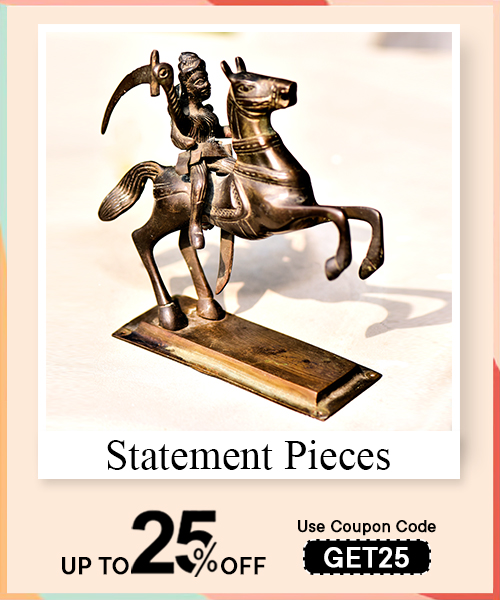Dot painting, also known as pointillism or dot art, has a rich history rooted in various indigenous cultures around the world. The Indigenous Australian peoples, Aboriginals, brought dot painting to the art world. People can trace its origins back to ancient times.
Dot painting has been an integral part of Aboriginal culture for thousands of years. It serves storytelling, connects with the land, and preserves cultural heritage. Artists created dot paintings by applying natural pigments derived from plants and minerals. They used handmade tools, such as sticks and brushes.
Dot painting includes a wide range of styles and methods. Each is distinct to the cultural setting from which it emerged. Indigenous Australian art has various regional styles. They are the detailed dot work of Western Desert artisans. The colorful patterns of the Kimberley area. Other civilizations across the world practice dot painting. Each has its unique style and aesthetic. Native American art uses dot painting in elaborate beading or on ceramics. In India and Nepal, artists use dot painting in sacred art and mandala designs.
Dot painting is very significant for Indigenous peoples and other civilizations alike. In Aboriginal culture, each dot is essential and tells a story. It may represent Dreamtime stories, holy spots, or ancestral links. Dot paintings represent many spiritual ideas. They also depict familial relationships. They show the interaction between humans and the natural world. Dot painting also contributes to cultural preservation. It passes down traditional knowledge and lessons from one generation to the next. It also promotes a sense of belonging and identity. This strengthens cultural pride and resilience.
Read More:EXPLORING THE RICH HERITAGE AND CONTEMPORARY SIGNIFICANCE OF GOND PAINTING
Dot painting uses a variety of paints and brushes. Acrylic paints are adaptable, have brilliant colors, and have a short drying time. Artists use metallic or fluorescent hues to add visual interest to their work. Regarding brushes, painters use fine-tipped brushes or specialized dotting tools. They are meant to create precise dots of varied sizes. Canvas is a common surface for dot paintings. These can be wood panels, pebbles, or ceramic tiles. They can also be textiles or recycled materials like cardboard or paper.
Besides other equipment and accessories to improve your dot painting experience. This may include:
- Palette: Used to mix and combine colors.
- Stencils: Used to generate regular shapes or outlines for dot placement.
- Dotting tools include dowels, stylus tools, and even the end of a paintbrush handle. They use them to create uniform dot sizes.
- Paint pens: These add fine details or outlines to dot paintings.
- Choose colors that complement each other. This will add visual appeal to dot painting.
- Experimenting with different color combinations may result in beautiful and dynamic dot paintings.
- To reduce exposure to paint fumes, ensure your workstation has enough ventilation.
- Use non-toxic paints and products with youngsters or anyone who has sensitivities.
- Avoid swallowing or inhaling paint particles. Clean your hands after using paint or brushes.
- Keep paints and other products out of the reach of children and dogs. This prevents accidental ingestion or accidents.

- Prepare the supplies you need. Collect your canvas, acrylic paints, and dotting tools.
- Select your design: Choose a simple design or pattern to start with.
- Begin with the Base: Create your design's base dots using a bigger dotting tool.
- Adding Dots: Add to your design by adding tiny dots on top of the foundation ones.
- Keep Uniformity: Maintain steady pressure on the dotting tool to produce uniform dots. Allow your painting to dry completely before adding any further layers or details.
- Finish and Seal: Add any finishing touches once your painting is dry and apply a varnish.
- Overlap Dots: By overlapping different colored dots, you can provide depth and dimension.
- Color Blending: Dip your dotting tool into a variety of colors and apply them straight to the canvas
- Layer dots of different colors in stages to produce smooth transitions and gradients.
- Experiment with different angles. Spacing between dots adds texture.
- Add Details: Use little dotting tools or a delicate brush to add finer details.
- Contrast bigger, bolder dots with more minor ones. More complex ones to create depth in your painting.
Traditional Aboriginal dot painting designs originate from Indigenous Australian civilizations. They have a profound spiritual and cultural significance. These designs feature Dreamtime stories, ancestral spirits, spiritual symbols, and landscapes. Each dot has meaning, depicting stars, animals, plants, and natural structures. These paintings allow people to connect with their ancestors. They pass along traditional information and express their spiritual views.
Dot painting has grown beyond its traditional beginnings. Contemporary artists use dot paintings to explore subjects such as identity, societal challenges, and personal expression. They explore different techniques, colors, and styles, resulting in distinct interpretations of this art genre. Some artists combine dot painting with abstract or surrealism to produce appealing compositions.
Nature is a frequent and motivating motif in dot painting. The beauty and diversity of the natural world inspire artists. Using intricate dot patterns, they represent landscapes, flora, wildlife, and natural events. Nature-inspired dot paintings portray peace, connectivity, and appreciation for the environment.
Dot painting has become popular in mainstream society. Examples appear in art exhibitions, galleries, and even commercial items. Dot painting motifs have been integrated into fashion, home design, and digital media. This makes them more accessible to a broader audience. Dot painting seminars and classes connect people with this art form. This promotes creativity and cultural awareness.
Dot painting is a peaceful and calming experience. This is due to the repetitive nature of the technique and the need to focus on each dot. Individuals who focus on the process of painting can build mindfulness. This can reduce stress. The repetitive process of producing dots encourages relaxation. It calms the mind and lessens worry.
Dot painting can be therapeutic for people enduring emotional or mental hardship. The creative process allows for self-expression and emotional release. It will enable people to explore their thoughts and feelings without using words. Dot painting may provide individuals with solitude, comfort, and empowerment.
Dot painting, when paired with deep breathing, meditation can boost its therapeutic benefits. Integrating these techniques can help people connect with the creative process. Develop self-awareness and boost general well-being. Mindful breathing practices can help people stay present and grounded when painting dots.

Dot painting is an effective strategy for dealing with stress and anxiety. Painting helps people to focus their energies on a good pastime. It diverts them from bad thoughts and problems. The tactile feeling of transferring paint to canvas may be relaxing and calming. It allows people to feel more grounded and focused in the middle of life's hardships.
Dot painting provides many options for adding unique and distinctive touches to your home decor. You may use dot painting to decorate a variety of objects. They include canvas wall art, vases, coasters, picture frames, and even furniture. Draw inspiration from nature, geometric patterns, or cultural themes. Use these to create attractive pieces for decorating your house.
- Gather Supplies:
- Collect your selected decorations, acrylic paints, dotting tools, and protective covering.
- If necessary, clean and prime the surface of your chosen object.
- Design: Select a design or pattern for your dot painting project.
- Apply Base Dots: Add base dots with a bigger dotting tool and your desired paint colors.
- Layer Dots: Layer smaller dots on top of the foundation dots to give your design depth and dimension. Allow your creation to dry before adding any more layers or features.
- Seal (Optional): To protect the design, apply a varnish or lacquer to your dot-painted object.
Dot painting techniques allow you to personalize objects. You can add initials, names, dates, or essential symbols. Consider using your favorite colors, patterns, or themes. Create unique items that represent your personality and taste.
Dot painting is a beautiful way to upcycle and repurpose old or thrifted items into unique décor pieces. Turn old mason jars, wooden crates, and ceramic dishes into lovely home decor. This activity also allows you to express yourself and give abandoned items new life.
Two famous Indigenous Australian painters are Clifford Possum Tjapaltjarri and Emily Kame Kngwarreye. They are renowned for using traditional Aboriginal dot painting techniques. They use these techniques to depict Dreamtime stories and spiritual landscapes. Yayoi Kusama from Japan and Georges Seurat from France have transformed dot painting. It executes themes of pattern, repetition, and color in their works.
Researchers study famous dot paintings for their complex patterns, meaning, and visual impact. Georges Seurat used the pointillist method. example, "A Sunday Afternoon on the Island of La Grande Jatte." Minute dots of color form a unified image when viewed from a distance. Aboriginal artist Emily Kame Kngwarreye incorporates layers of dots in their dot paintings. They symbolize natural components. The viewers see it as spiritual ties to the land and ancestral traditions.
Read More:SAURA PAINTING: A CULTURAL TAPESTRY FROM INDIA'S TRIBAL HEARTLANDS
Dot painting had a tremendous impact on contemporary art. They prompt painters to try new techniques and aesthetics. The pointillist movement was led by painters such as Georges Seurat. They transformed the use of color and light in painting. It influenced later art styles such as Impressionism and Post-Impressionism. Indigenous Australian dot painting techniques have also gained international acclaim. It inspires modern artists and generates cross-cultural discussions about art, identity, and spirituality.
Research the techniques and themes used by well-known painters. Incorporate parts of popular dot painting styles into your work. Experiment with dot sizes, spacing, and color combinations to create appealing compositions. To add significance to your dot paintings. Look to nature, society, and personal experiences for inspiration. Layer dots to create depth and texture. Don't hesitate to experiment and explore new ideas in your artwork.
One must consider location, teacher skill, and class size to choose a dot painting workshop. Look for seminars that match your interests and skill level. Reading reviews and testimonials might help you determine the quality of the lesson. Inquire about the materials given and any criteria for participation.
Explore the many online lessons and resources available for learning dot painting. YouTube, Skillshare, and Udemy offer diverse instructional videos and courses. They target different ability levels. Use keywords like "dot painting techniques" or "beginner dot painting tutorials." Participate in online groups and forums. They exchange tips and get help from other fans.
Learning dot painting in a group setting promoted friendship, inspiration, and criticism. Group sessions allow you to share ideas and learn from others' skills. You get valuable insights from teachers and peers. The supportive environment promotes motivation and accountability. Pushes people to stretch their creative bounds. Joining a dot painting class may help you improve your talents. It also creates long-term relationships with people who share your interests.
Read More:SUBIKA PAINTING: A TRADITION OF INDIAN FOLK ART
Consider holding your dot painting workshop or class. Begin by organizing the program. Get the appropriate resources. Decide on a suitable site. Advertise your workshop on social media, local community boards, and online event platforms. In this way you get more people to attend. Customize the workshop to fit various skill levels. Provide a nurturing atmosphere for creativity to thrive.
Combine dot painting line, form, and color to create dynamic compositions. Experiment with introducing strong lines or elaborate forms into your dot creation. It gives depth and richness. Use contrasting colors to provide visual appeal. They can inspire distinct emotions in your artwork.
To add texture and complexity, experiment with different dot sizes and densities. Create unique dot patterns and effects. Experiment with tools such as brushes, styluses, and even odd objects. Blend conventional dot painting to create your distinctive style.
Break free from conventional norms by experimenting with this unique style of painting. Allow your imagination to run wild. Build unique compositions that defy traditional depictions. Explore the concepts of emotion, energy, and movement via abstract dot work. Allow your intuition to lead your artistic expression. Accept the flexibility to perceive abstract shapes in your unique manner.
Push the boundaries. Deviate from the dot painting guidelines. Challenge the current quo. Experiment with unorthodox materials, techniques, and canvases. Challenge preconceptions and produce unique artwork. Accept inconsistency and unpredictability as you explore new ideas. Push the boundaries of what dot painting can achieve.
Use Instagram and Facebook to promote your dot painting. Engage your audience by offering behind-the-scenes looks at your creative process. Also, blog. Collaborate with influencers or other artists to broaden your reach and attract new consumers. Consider arranging freebies or contests to increase enthusiasm and interest in your artwork.
Optimize your website for search engines. Include important keywords in your product descriptions and metadata. Use email marketing campaigns. Keep your audience updated about new products, specials, and forthcoming events. Create a robust online presence. Engage with your target audience via blog articles, newsletters, and social media engagements.
When pricing your dot paintings, consider materials, size, intricacy, and demand. Examine comparable artworks on the market to assess competitive prices. Offer a choice of price points to appeal to a wide range of consumers. Provide clear and upfront price information on your website. Be willing to negotiate or offer reductions as needed. Streamline the purchase process by providing different payment alternatives and guaranteeing safe transactions.
Read More:INTRODUCTION TO INDIAN ART
Investigate options for collaboration with other artists, galleries, or local businesses. Broaden your reach and increase awareness. Take part in art fairs, marketplaces, and exhibits. Bring your dot painting work to a larger audience. Network with other artists and art fans. Form relationships and explore possibilities for future collaborations or partnerships. Find places to show and sell your art in person and online.
Dot painting is a diverse and striking art style. It combines tradition and innovation to produce breathtaking compositions. It can blend with a variety of methods and styles.
Let us continue to explore and push the frontiers of dot painting. Encourage originality and experimentation. Limitless possibilities are waiting for us to discover. It urges us to use our imaginations and develop our distinct artistic voices. Dot painting is vital in art and culture. It connects the past and present while laying the path for future innovation. Its rich history and evolving methods contribute to the diverse ways artists express themselves. Dot paintings enrich our world with beauty and significance.

















